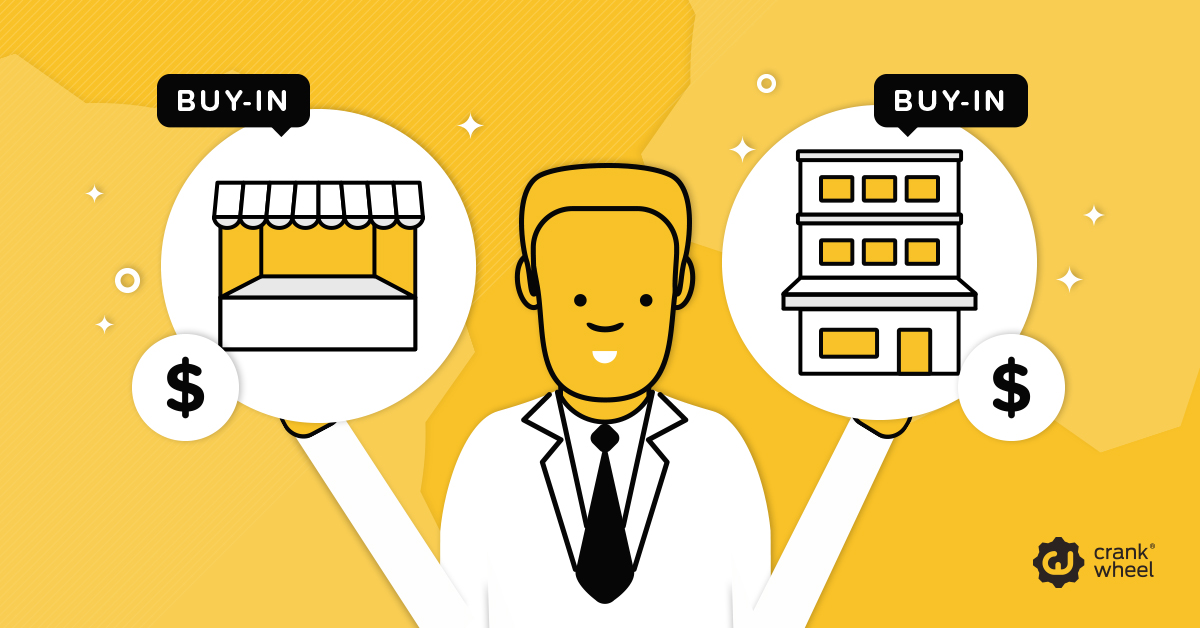How to get buy-in when selling to small and medium businesses
Selling to small and medium businesses (SMBs) is about proving that your solution will solve a challenge they are having. Providing you’re talking to a company with a challenge you can solve, they need this solution and have a budget, then you are talking to a potential client.

Finding out if they’ve got a budget isn’t always the most difficult obstacle to overcome. Sometimes, your main difficulty is getting buy-in.
What does it mean to achieve buy-in?
Achieving buy-in means securing internal consensus. In larger companies, this might mean going to tender, getting the approval of multiple managers and at least one senior leader. But in a smaller business, there is a good chance that your primary objective is to win approval and a budget from the owner(s).
In theory, this should be a lot easier. It certainly takes less time than a sales cycle that depends on corporate buyers.
However, we can’t assume this is going to be easy or straightforward.
How to achieve buy-in?
Getting buy-in does take work, especially when you are communicating with more than one stakeholder. Internal politics and dynamics can play a role, too. One or more stakeholders may be in favour of a solution, whereas others could be against it.
Money and budgets always play a role in these internal discussions. A manager responsible for one area of the business might find a budget at risk, or money not available for something they need if another department gets money for the solution you are selling. Your role is to overcome these objections if they do come into the conversation, or pre-empt them if they are the sort of objection you often encounter.
One way to do that is to show that your solution either generates more, or will save the client more money in the long-run. In time, that means the company can increase budgets for every team and generate a larger profit.
Overcoming objections is one way to achieve buy-in. Another way, equally as crucial, is to demonstrate that your product/service solves a particular challenge.
Let’s say that you are selling web development services to companies in the manufacturing sector with less than 50 employees. Think about and find out who their clients are before picking up the phone and trying to get a meeting. Getting buy-in means doing your homework beforehand.
To continue the example: If you are selling websites to manufacturers, are they going to care about all of the tech specs and bells and whistles? Do they need an e-commerce plugin? No and no. Are they going to be particularly impressed that a website is mobile-enabled? Maybe, it might be relevant to some of their potential buyers.
However, for the most part, to get buy-in from manufacturing clients, they need to know what the website will look like, timeline, budget and what you, as a service provider, need from the client to get started. A simple, clean, functioning WordPress website is more appropriate than an expensive custom-build that will take months to design and implement.
For small businesses, you are going to achieve buy-in if you focus on a few core messages:
Demonstrate your solution solves a particular problem they are having: Does it get the job done?
Will it save them time/money, or help them to generate more?
Does it meet the needs of the stakeholders you need to convince?
Do you have an argument to overcome any objections you are likely to encounter?
And finally: Is this a high-priority project and how soon do they want to go ahead?
Before meeting in-person, it can prove useful to jump on a quick online demo or live call to lay the groundwork. Get a sense of what they want to accomplish and how you can help them achieve their business goals. With an instant online demo, you’ve got the perfect opportunity to quickly start getting buy-in before you meet other members of the team.
